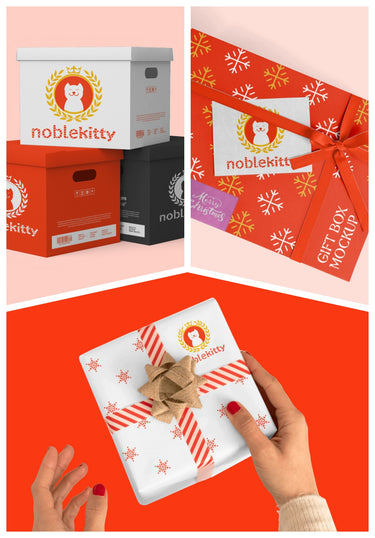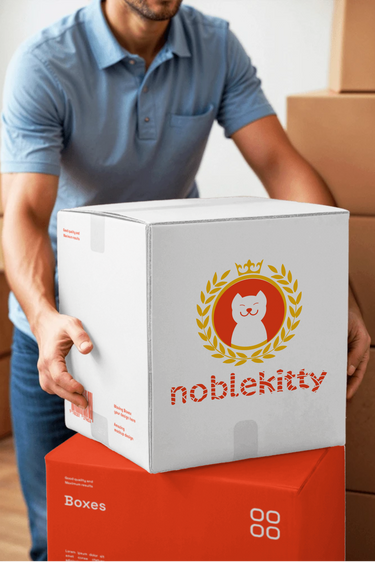Complete Guide to Kitten Care: From Newborn to One Year
Kitten Care Guide (0–12 Months) — The NobleKitty Way
Welcoming a kitten into your home is a joy—and a commitment. The first year shapes lifelong health and behaviour. This guide distils what really matters in the NobleKitty style: clear steps, friendly tools, and stress‑free routines.
1) Nutrition — Build a Strong Start
Nutrition fuels growth, immunity, and brain development. Keep meals consistent, portions measured, and water fresh.
0–2 Months · Mother’s Milk ➜ Gentle Transition

- Mother’s Milk: Best for antibodies and early immunity. If needed, use kitten formula.
- Tools: Kitten bottle or syringe; tiny nipple size; feed every 2 hours in week one.
- Portion: 0–7 days ≈ 4ml per 100g/feeding; week 2: every 2h day / 4h night.
2–4 Months · Weaning, Soft Textures

- Wean: Introduce wet kitten food or softened dry food.
- Frequency: 3–4×/day, 20–40g each meal.
4–6 Months · High‑Protein Growth

- Protein focus: Chicken, beef, fish for muscle & bone.
- Frequency: 2×/day, 25–55g each.
6–12 Months · Transition to Adult Food
- Heat cycle: Monitor behaviour and appetite.
- Diet shift: Gradually move to adult formula; avoid overfeeding.
- Frequency: 1–2×/day, 40–80g each.
2) Health Care — Vet Checks & Core Vaccines

Kittens’ immune systems are immature—stick to a schedule.
- Vaccines: Start at 6–8 weeks; boosters every 2–4 weeks until 16 weeks (distemper, herpesvirus, rabies per local guidance).
- Deworm: From 2–3 weeks, then monthly to 6 months.
- Spay/Neuter: Commonly around 6 months; consult your vet.
3) Behaviour & Socialisation — Gentle, Positive, Consistent

Early months set life‑long habits. Reward calm curiosity; redirect, don’t punish.
Litter Box Basics

Place a clean box in a quiet corner. Most kittens learn quickly when the spot feels safe.
Scratching = Healthy Claws

Offer vertical and horizontal options; reward when used. Place near nap spots and entrances.
Socialisation Window
From 2–4 months, introduce gentle sounds, new rooms, friendly guests, and calm pets. Keep sessions short and positive.
4) Living Space — Safe, Stimulating, Cozy
A supportive environment reduces anxiety and encourages healthy play‑rest cycles.

- Safe Space: Remove wires, sharp objects, chemicals.
- Toys: Wands, balls, interactive puzzles for daily play.
- Rest: Quiet, draft‑free corner; kittens sleep a lot to grow.
5) Emotional Wellness — Bond First
Confidence grows from predictable routines and gentle engagement.
- Daily Play: 2–3 short sessions beat one long session.
- Watch Behaviour: Sudden changes? Check stressors, then your vet.
Milestones at a Glance
| Age | Key Care Focus |
|---|---|
| 0–2 Months | Milk/formula · Warmth & comfort · Initial vet plan |
| 2–4 Months | Weaning · First vaccinations · First deworming |
| 4–6 Months | Litter box routine · Scratching options · Socialisation |
| 6–8 Months | Booster shots · Diet adjustment · Behaviour basics |
| 8–10 Months | Environment variety · Weight checks · Consider spay/neuter |
| 10–12 Months | Adult food transition · Portion control · Habit reinforcement |
Conclusion
The first year sets the tone for a lifetime. With steady nutrition, gentle guidance, and a cozy environment, your kitten grows into a confident, cuddly adult—The NobleKitty way.






